-
 Bitcoin
Bitcoin $106,754.6083
1.33% -
 Ethereum
Ethereum $2,625.8249
3.80% -
 Tether USDt
Tether USDt $1.0001
-0.03% -
 XRP
XRP $2.1891
1.67% -
 BNB
BNB $654.5220
0.66% -
 Solana
Solana $156.9428
7.28% -
 USDC
USDC $0.9998
0.00% -
 Dogecoin
Dogecoin $0.1780
1.14% -
 TRON
TRON $0.2706
-0.16% -
 Cardano
Cardano $0.6470
2.77% -
 Hyperliquid
Hyperliquid $44.6467
10.24% -
 Sui
Sui $3.1128
3.86% -
 Bitcoin Cash
Bitcoin Cash $455.7646
3.00% -
 Chainlink
Chainlink $13.6858
4.08% -
 UNUS SED LEO
UNUS SED LEO $9.2682
0.21% -
 Avalanche
Avalanche $19.7433
3.79% -
 Stellar
Stellar $0.2616
1.64% -
 Toncoin
Toncoin $3.0222
2.19% -
 Shiba Inu
Shiba Inu $0.0...01220
1.49% -
 Hedera
Hedera $0.1580
2.75% -
 Litecoin
Litecoin $87.4964
2.29% -
 Polkadot
Polkadot $3.8958
3.05% -
 Ethena USDe
Ethena USDe $1.0000
-0.04% -
 Monero
Monero $317.2263
0.26% -
 Bitget Token
Bitget Token $4.5985
1.68% -
 Dai
Dai $0.9999
0.00% -
 Pepe
Pepe $0.0...01140
2.44% -
 Uniswap
Uniswap $7.6065
5.29% -
 Pi
Pi $0.6042
-2.00% -
 Aave
Aave $289.6343
6.02%
What does the WVAD indicator suddenly surge in volume mean?
A sudden surge in the WVAD indicator signals strong buying or selling pressure, often indicating accumulation or distribution by large market players.
Jun 14, 2025 at 11:21 pm
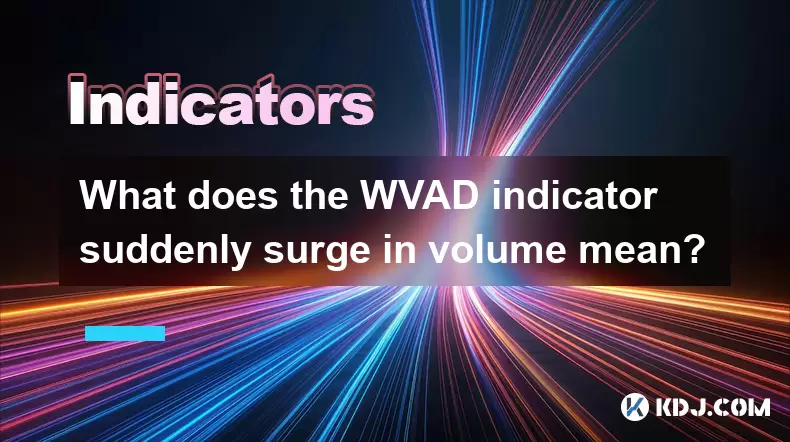
Understanding the WVAD Indicator
The WVAD (Williams Variable Accumulation/Distribution) indicator is a technical analysis tool used to measure buying and selling pressure in financial markets, including cryptocurrencies. It takes into account both price and volume data to determine whether an asset is being accumulated or distributed by market participants.
When analyzing the WVAD indicator, traders look for divergences between the indicator and price action. A sudden surge in the WVAD line suggests that there has been a significant increase in either buying or selling pressure. In the context of cryptocurrency trading, where volatility is common, understanding what drives these surges becomes essential.
What Does a Sudden Surge in Volume Mean?
A sudden surge in volume on the WVAD indicator typically reflects a sharp increase in market participation. This could be due to several factors:
- Large institutional trades
- Market-moving news events
- Sudden shifts in sentiment
- Technical breakouts or breakdowns
In crypto markets, which are known for their high sensitivity to news and social media trends, such volume spikes can occur rapidly. When the WVAD indicator surges upward, it often indicates strong accumulation — buyers are stepping in aggressively. Conversely, a sharp downward spike may signal heavy distribution — sellers dominating the market.
How to Interpret a WVAD Surge in Cryptocurrency Trading
Interpreting a WVAD surge requires careful analysis of the broader market context. Here’s how traders typically approach this situation:
- Check Price Action: Is the price rising alongside the WVAD surge? That usually confirms strength.
- Look at Market Conditions: Is the market in a bullish trend, bearish trend, or consolidation phase?
- Cross-reference with Other Indicators: Use tools like RSI, MACD, or moving averages to confirm the signals.
- Assess Volume Patterns: Compare the current volume spike with historical levels to gauge its significance.
For example, if Bitcoin's WVAD line suddenly rises during a period of sideways movement, it might indicate that large players are accumulating before a potential breakout. On the other hand, a surge during overbought conditions could signal a trap for retail traders.
Steps to Analyze a WVAD Surge in Real-Time
To effectively analyze a WVAD surge, follow these steps:
- Open a charting platform that supports the Williams Variable Accumulation/Distribution indicator (e.g., TradingView).
- Apply the WVAD indicator to your chosen cryptocurrency pair.
- Identify the surge visually — a steep rise or fall in the WVAD histogram or line.
- Compare the timing of the surge with recent price movements and volume bars.
- Zoom out to higher timeframes (like 4H or Daily) to understand the broader trend.
- Review recent news or announcements related to the cryptocurrency.
- Use candlestick patterns to see if the surge aligns with any reversal or continuation formations.
This methodical approach helps traders avoid knee-jerk reactions and instead make informed decisions based on multiple confirming factors.
Common Scenarios Where WVAD Surges Occur in Crypto Markets
Certain scenarios frequently lead to WVAD surges in cryptocurrency trading:
- Whale Movements: Large holders transferring funds can trigger sudden volume changes.
- Exchange Listings or Delistings: Positive or negative developments regarding exchange support can drive rapid trades.
- FOMO Events: Social media hype around a token often leads to aggressive buying.
- Regulatory Announcements: Government statements or policy changes can cause panic or euphoria.
- On-chain Activity Spikes: Increased transactions or smart contract interactions may precede price moves.
Each of these situations may result in a visible spike on the WVAD indicator, providing traders with actionable insights when analyzed correctly.
Frequently Asked Questions
Q: Can the WVAD indicator be used alone for trading decisions?
A: While the WVAD indicator provides valuable insights into accumulation and distribution, it should not be used in isolation. Combining it with other indicators like moving averages or volume profiles enhances accuracy.
Q: How does the WVAD differ from the standard Accumulation/Distribution line?
A: The WVAD indicator adjusts for the position of the close relative to the high-low range, making it more sensitive to intraday price action compared to the traditional A/D line, which uses only the closing price.
Q: What timeframes are best suited for observing WVAD surges?
A: Short-term traders often use the 15-minute or 1-hour charts for quick entries, while swing traders prefer the 4-hour or daily charts for more reliable signals. Always match the timeframe with your trading strategy.
Q: Are WVAD surges always followed by significant price moves?
A: Not necessarily. Sometimes the WVAD surge reflects temporary noise or false breakouts. Traders must wait for confirmation through price action or additional indicators before acting.
Disclaimer:info@kdj.com
The information provided is not trading advice. kdj.com does not assume any responsibility for any investments made based on the information provided in this article. Cryptocurrencies are highly volatile and it is highly recommended that you invest with caution after thorough research!
If you believe that the content used on this website infringes your copyright, please contact us immediately (info@kdj.com) and we will delete it promptly.
- 2025-W Uncirculated American Gold Eagle and Dr. Vera Rubin Quarter Mark New Products
- 2025-06-13 06:25:13
- Ruvi AI (RVU) Leverages Blockchain and Artificial Intelligence to Disrupt Marketing, Entertainment, and Finance
- 2025-06-13 07:05:12
- H100 Group AB Raises 101 Million SEK (Approximately $10.6 Million) to Bolster Bitcoin Reserves
- 2025-06-13 06:25:13
- Galaxy Digital CEO Mike Novogratz Says Bitcoin Will Replace Gold and Go to $1,000,000
- 2025-06-13 06:45:13
- Trust Wallet Token (TWT) Price Drops 5.7% as RWA Integration Plans Ignite Excitement
- 2025-06-13 06:45:13
- Ethereum (ETH) Is in the Second Phase of a Three-Stage Market Cycle
- 2025-06-13 07:25:13
Related knowledge
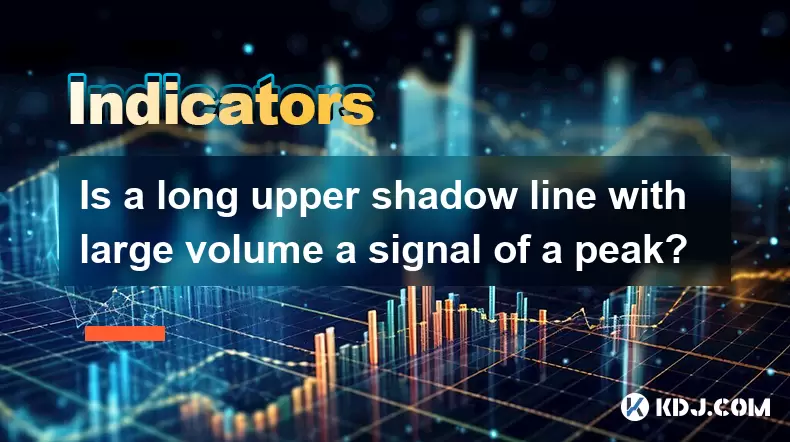
Is a long upper shadow line with large volume a signal of a peak?
Jun 17,2025 at 05:07am
Understanding the Long Upper Shadow LineA long upper shadow line, often referred to as a shooting star or inverted hammer depending on its location in a chart, is a candlestick pattern that indicates potential reversal from an uptrend. This pattern forms when prices rise significantly during the trading period but then fall back to close near the openin...

How to confirm the effectiveness of the average price line support in the time-sharing chart?
Jun 17,2025 at 12:56am
Understanding the Time-Sharing Chart and Its RelevanceIn cryptocurrency trading, time-sharing charts play a crucial role in analyzing short-term price movements. These charts typically display price fluctuations over a specific period, often ranging from minutes to hours. Traders rely on them to make quick decisions based on real-time data. The average ...

What does it mean when the momentum indicator breaks above the zero axis?
Jun 17,2025 at 12:43am
Understanding the Momentum IndicatorThe momentum indicator is a technical analysis tool used to measure the speed or velocity of price movements in cryptocurrency markets. It helps traders identify potential trend reversals, overbought or oversold conditions, and confirms existing trends. The indicator typically oscillates around a zero line, with value...
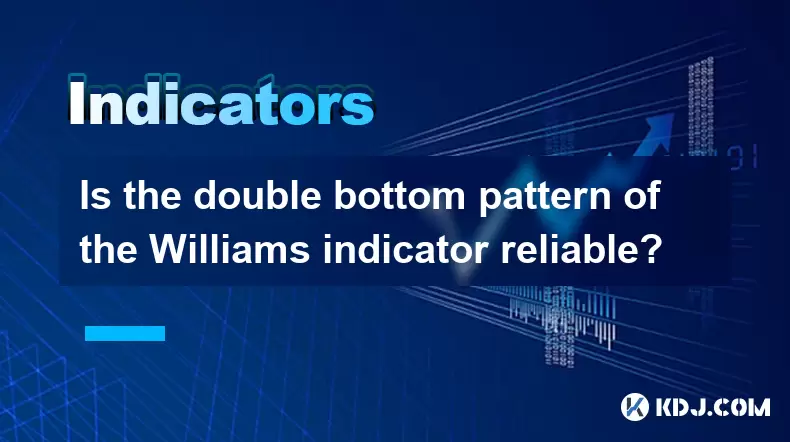
Is the double bottom pattern of the Williams indicator reliable?
Jun 17,2025 at 03:56am
Understanding the Williams Indicator and Its SignificanceThe Williams %R indicator, often referred to as Williams Percent Range, is a momentum oscillator used in technical analysis to identify overbought or oversold conditions in the market. Developed by Larry Williams, this indicator fluctuates between 0 and -100, with readings above -20 indicating ove...
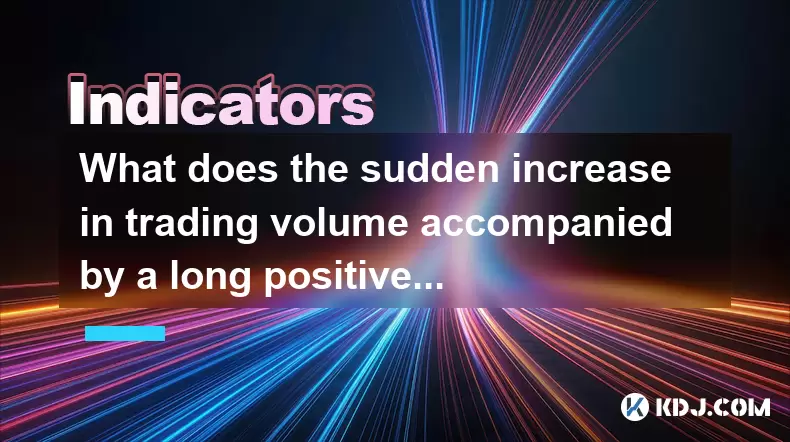
What does the sudden increase in trading volume accompanied by a long positive line mean?
Jun 17,2025 at 06:01am
Understanding the Sudden Surge in Trading VolumeWhen traders observe a sudden increase in trading volume, it typically signals a significant shift in market sentiment. This surge often indicates that more participants are entering or exiting positions, which could be due to news events, macroeconomic data releases, or institutional activity. High tradin...
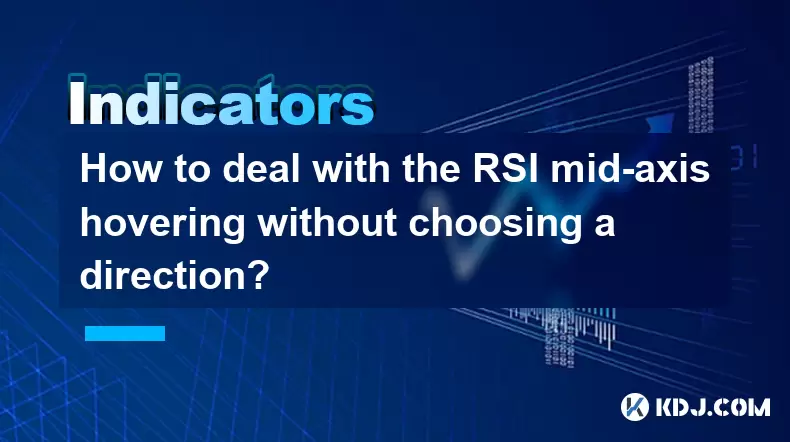
How to deal with the RSI mid-axis hovering without choosing a direction?
Jun 17,2025 at 02:02am
Understanding RSI Mid-Axis Hovering in Cryptocurrency TradingThe Relative Strength Index (RSI) is a popular momentum oscillator used by traders to assess whether an asset is overbought or oversold. In cryptocurrency markets, it's common for the RSI to hover around its mid-axis, typically at the 50 level, without showing a clear upward or downward trend....

Is a long upper shadow line with large volume a signal of a peak?
Jun 17,2025 at 05:07am
Understanding the Long Upper Shadow LineA long upper shadow line, often referred to as a shooting star or inverted hammer depending on its location in a chart, is a candlestick pattern that indicates potential reversal from an uptrend. This pattern forms when prices rise significantly during the trading period but then fall back to close near the openin...

How to confirm the effectiveness of the average price line support in the time-sharing chart?
Jun 17,2025 at 12:56am
Understanding the Time-Sharing Chart and Its RelevanceIn cryptocurrency trading, time-sharing charts play a crucial role in analyzing short-term price movements. These charts typically display price fluctuations over a specific period, often ranging from minutes to hours. Traders rely on them to make quick decisions based on real-time data. The average ...

What does it mean when the momentum indicator breaks above the zero axis?
Jun 17,2025 at 12:43am
Understanding the Momentum IndicatorThe momentum indicator is a technical analysis tool used to measure the speed or velocity of price movements in cryptocurrency markets. It helps traders identify potential trend reversals, overbought or oversold conditions, and confirms existing trends. The indicator typically oscillates around a zero line, with value...

Is the double bottom pattern of the Williams indicator reliable?
Jun 17,2025 at 03:56am
Understanding the Williams Indicator and Its SignificanceThe Williams %R indicator, often referred to as Williams Percent Range, is a momentum oscillator used in technical analysis to identify overbought or oversold conditions in the market. Developed by Larry Williams, this indicator fluctuates between 0 and -100, with readings above -20 indicating ove...

What does the sudden increase in trading volume accompanied by a long positive line mean?
Jun 17,2025 at 06:01am
Understanding the Sudden Surge in Trading VolumeWhen traders observe a sudden increase in trading volume, it typically signals a significant shift in market sentiment. This surge often indicates that more participants are entering or exiting positions, which could be due to news events, macroeconomic data releases, or institutional activity. High tradin...

How to deal with the RSI mid-axis hovering without choosing a direction?
Jun 17,2025 at 02:02am
Understanding RSI Mid-Axis Hovering in Cryptocurrency TradingThe Relative Strength Index (RSI) is a popular momentum oscillator used by traders to assess whether an asset is overbought or oversold. In cryptocurrency markets, it's common for the RSI to hover around its mid-axis, typically at the 50 level, without showing a clear upward or downward trend....
See all articles

























































































